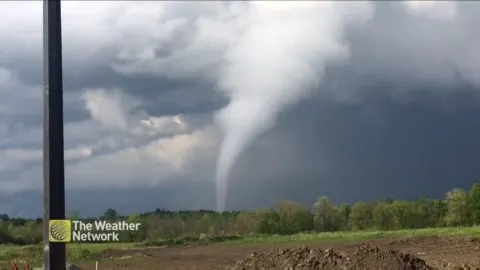
The Weather Network joins the search to find all of Canada's tornadoes
This new partnership promises to ramp up the search by the Northern Tornadoes Project.
To reach their ambitious goal of locating every tornado that occurs in Canada, the Northern Tornadoes Project has now teamed up with The Weather Network, which gives the Project unprecedented access to a vast resource of severe weather content. Their search is about to kick into overdrive!
The Northern Tornadoes Project began at Western University, in 2017, using a unique new method of locating tornadoes in Northern Ontario. Since then, the project has grown as the organizers formed partnerships, allowing them to expand their search, coast to coast to coast.
The latest partnership is possibly the most exciting, especially for the public. The Weather Network and the Northern Tornadoes Project will combine reach and resources to track down tornado and damage reports across Canada. Part of this relationship gives the researchers access to the extensive database of 'user generated content' submitted by our audience to The Weather Network's digital space.
"Our audience at The Weather Network provides us with an incredible amount of content such as photos and videos of storms," said Dayna Vettese, meteorologist and Editorial Manager of Weather Operations at The Weather Network. "This type of content is invaluable to the project in tracking down where a tornado may have occurred. This leads to better science around severe weather and in turn leads to keeping Canadians better informed and safe."
In essence, this new partnership makes every Weather Network audience member a potential citizen scientist in the effort to locate and classify every tornado that occurs in Canada!
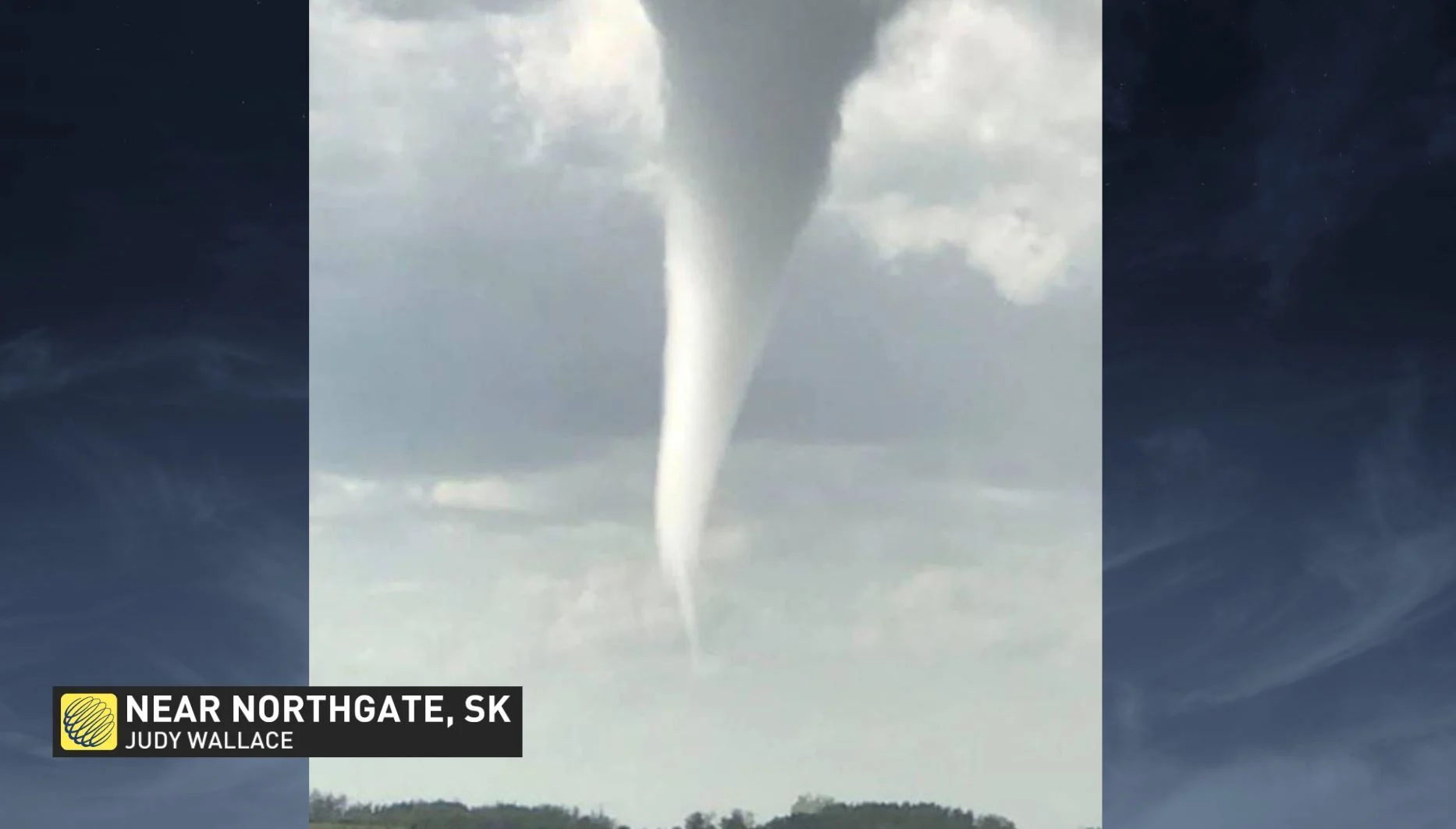
"Having this partnership will allow us to identify tornadoes and other storm damage much more effectively and efficiently," says Dr. Greg Kopp, a professor of Civil and Environmental Engineering at Western University and ImpactWX Chair in Severe Storms Engineering. "I think that will be a benefit to both of us, in terms of The Weather Network's mandate of warning people and providing up-to-date information, and for us, finding that information, documenting it, and reporting on that back to the community."

Engineering professor Greg Kopp (left) and meteorologist David Sills, Project Lead and Executive Director for the Northern Tornadoes Project, respectively. Credit: Frank Neufeld/Western News
"It will also be valuable for the public to see what we do when we conduct damage surveys, and how their information might contribute to that," added Dr. Dave Sills, executive director of the Northern Tornadoes Project. "We're encouraging citizen scientists, would-be meteorologists, and enthusiasts to contribute to the goals of the project, which is to track down every tornado across Canada."
Read Further: Tornado? Funnel Cloud? Landspout? What's the difference?
HOW TO REPORT A TORNADO IN CANADA
The first thing to emphasize here is that no one should put themselves in any kind of danger to take pictures or videos of a tornado or any other kind of severe weather. The first priority is always for everyone to remain safe.
"Keep away from windows and doors, try to keep out of the storm's way, and take shelter" says Sills.
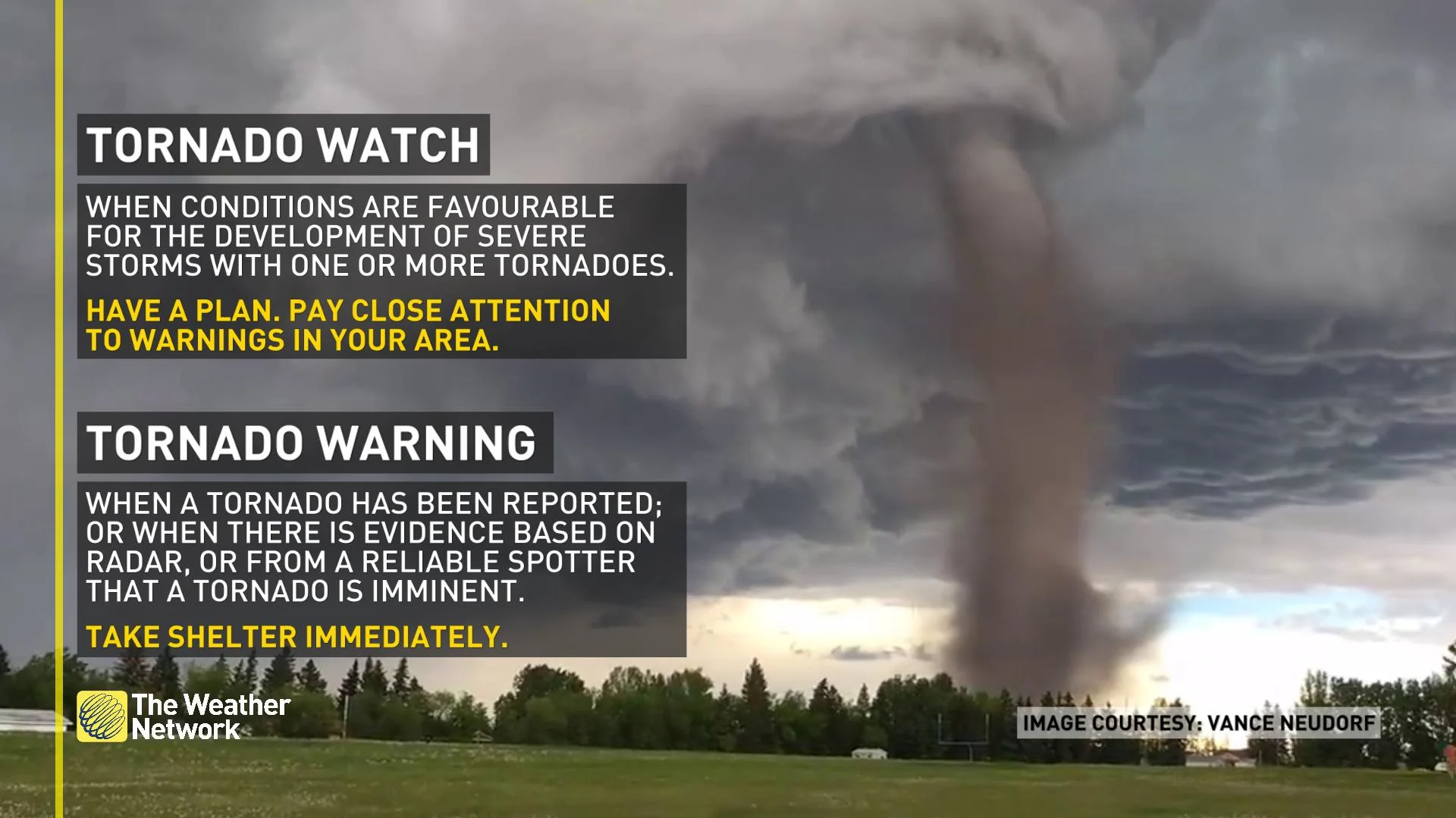
If you do see a tornado or potential tornado, or you've captured images or video, Sills advises that the first thing to do - when it's safe - is to report that information to forecasters with Environment and Climate Change Canada. This will allow them to keep up on the latest information, and thus adapt to the situation faster, changing watches and warnings as needed to best protect the public.
Environment and Climate Change Canada has a list of email addresses, one for each province and territory, which can be used to report severe weather. The fastest way to report severe weather to ECCC, however, is to post it to Twitter, using the appropriate hashtag for your province or territory, as shown on the map below.

Also tagging @weathernetwork, plus our storm hunters - Mark Robinson (@StormhunterTWN), Jaclyn Whittal (@jwhittalTWN) and Kyle Brittain (@KyleTWN) - will help us pass on valuable information to the public quickly.
The scientists with The Northern Tornadoes Project also appreciate seeing reports of severe weather as it is happening, so it always helps to tag them in any post. Use the appropriate hashtag for your province or territory when uploading your reports, photos and videos to social media - #BCNTP, #ABNTP, #SKNTP, #MBNTP, #ONNTP, #QCNTP, #NBNTP, #PENTP, #NSNTP, #NLNTP, #YTNTP, #NTNTP or #NUNTP - and tag them if you have room @westernuNTP.
At the same time, NTP's work only truly begins after the warnings have passed. That's the time to go to the Project website, at www.uwo.ca/ntp, and follow the instructions on their Report a Tornado page.
According to Kopp, the most useful pieces of information to provide in a report are: the location the damage occurred, photos showing what was damaged, and a description of how the damage occurred.
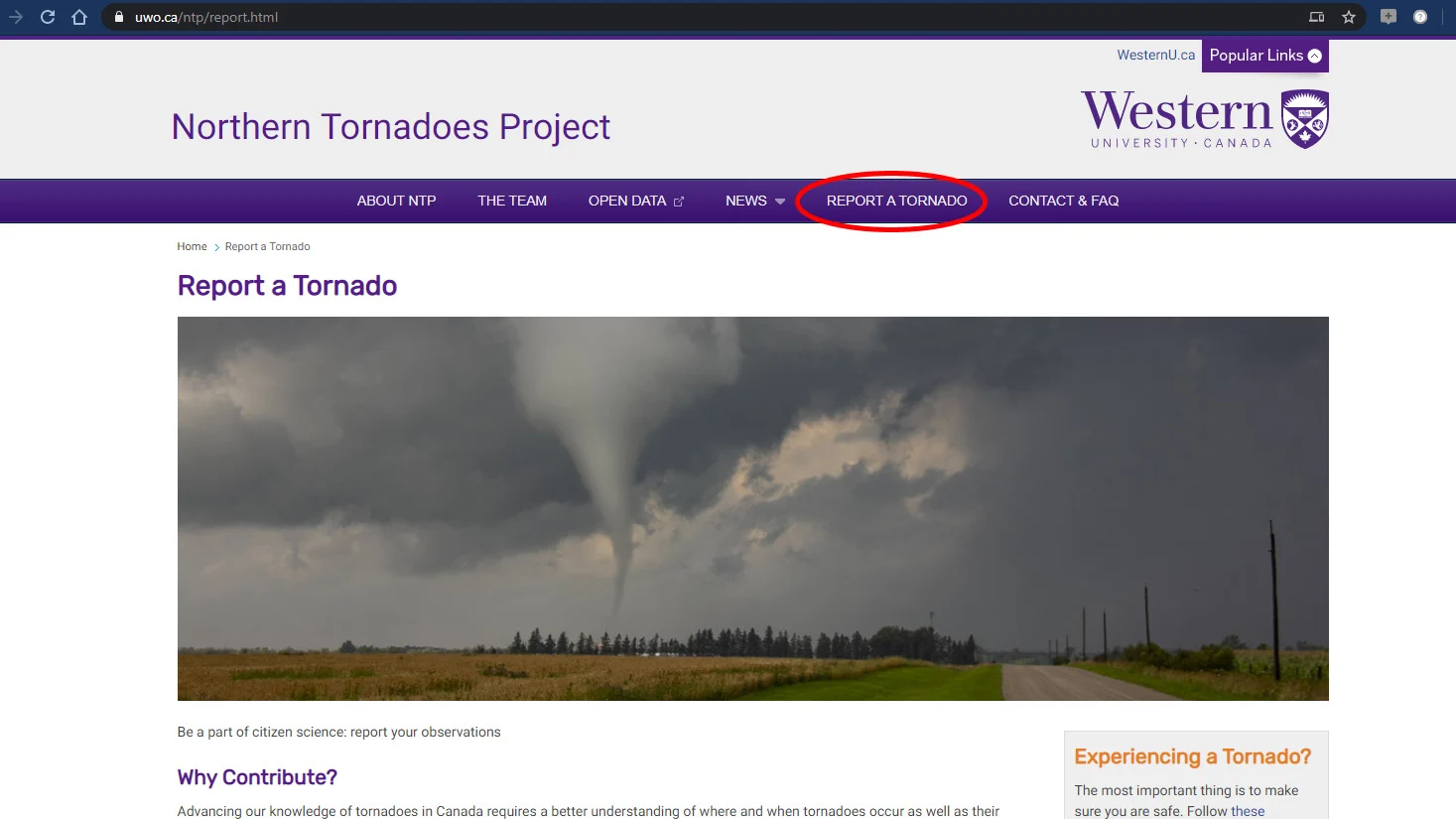
Follow the instructions on the NTP Report a Tornado page to submit your report of severe weather or potential tornado damage. Credit: NTP/WesternU
In some cases, classifying the exact strength of a tornado can depend on something as small a detail as the size of the nails used to attach a roof to a house. While it might be tempting to get up-close photos of the damage, however, Kopp says that wider-view images are far more useful for these reports.
"Close-ups views are of less value than more of a perspective view, so we can see what broke and where it is," Kopp said. If the team has follow-up questions, he added, to ask about specific details, they can contact the person who submitted a report to collect that information.
It is also worth considering that approaching too close to objects, trees or buildings damaged by severe weather could be hazardous to your health. So, it's best to keep your distance and give the NTP team the more useful 'perspective view' of the scene. Safety first!
Read more: Why the famous 'Tornado Alley' is on the move
CANADIAN TORNADOES?
When we think of tornadoes, it's easy to envision somewhere in the United States, with its classic 'tornado alley', but Canada sees its fair share of twisters too.
"If the United States wasn't there, we'd be right near the top of the list, in the world, for tornado activity," Sills said in a Weather Network interview in 2019.
"The activity that happens in the northern United States extends into parts of Canada," Sills explained at the time. "The big tornado alley through the central part of the U.S. extends into the Prairies, and the the midwest tornadoes extend into southern Ontario and Quebec, and even New Brunswick."
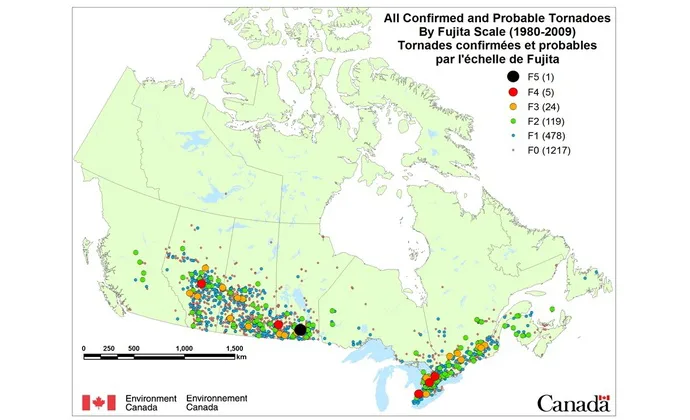
Confirmed and probable tornadoes across Canada from 1980-2009. Note Canada's only F5 tornado occurred in Manitoba. Source: Sills et al., 2012
According to Environment and Climate Change Canada, there is an average of around 60 tornadoes per year across the country. Although tornadoes have been reported in every province and territory of Canada, the majority occur in Alberta, Saskatchewan, Manitoba, Ontario and Quebec.
These events end up costing Canadians millions of dollars. Taking just one occurrence as an example, the six confirmed tornadoes that swept through Ottawa on September 21, 2018 - one EF-3, one EF-2 and four EF-1 - are estimated to have caused close to $300 million in damages.
Having a full account how many tornadoes are actually occurring across Canada, including those that would not normally be reported due to their remoteness, will benefit the insurance industry and those researching into Canadian tornadoes. Most importantly, though, it will help to better protect the public during severe weather events.






